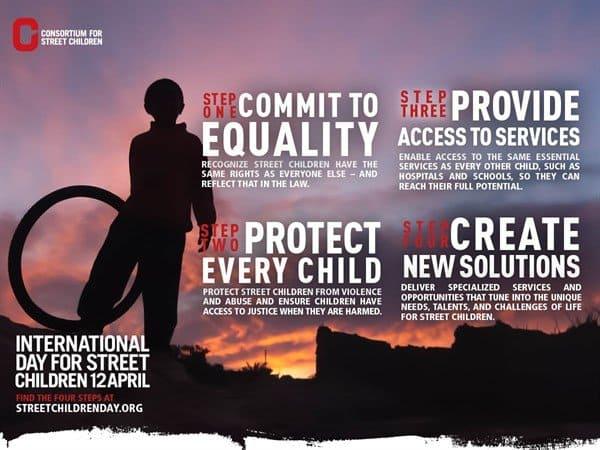Jahangir Nakir
“In order to ensure the rehabilitation and proper development of all the poor children with street children, social security forces should be expanded”-National Child Policy 2011, section 6.2.3. Under sub-section (1) of theInternational Children’s Rights Act 20, “All children, who are suffering from permanent deprivation of an interest in the family environment, are entitled to special protection and assistance from the State.” The collective initiative has become very important for non-government organizations to establish the rights of their physical, mental and moral development, academic education, the livelihood of the underprivileged and street children, and to build their self-sufficiency in the future.
The 89th edition of Bangladesh Child Law 2013, has told about the disadvantaged children in 16 categories. In the inauguration of World Children’sDay and Children’s Rights Week 2015, Honorable Prime Minister Sheikh Hasina has given clear instructions to the concerned ministry on the rehabilitation of street children. She said, “Why should our children wander in the streets? Not even a single child will roam around the streets. No child will live a miserable life like this.” To this end, she advised the government, including the private sector, all to work together for the rehabilitation of the street children. Based on this guidance, the Ministry of Women and Children Affairs has done a survey in Dhaka North and South City. Later in 2016, the programs on the rehabilitation of street children were started.
Honourable State Minister for Women and Children Affairs, Meher AfrozChumki, MP and Mr. Nachima Begum, Secretary, Women and Children AffairsMinistry organized a two-day workshop for the concerted efforts for rehabilitation of the underprivileged and street children. In the workshop, for long-term rehabilitation, initiatives were taken for comprehensive plans with the representatives of government and non-government organizations’representatives. Here are some proposals for taking and implementing these plans:

Who are the street children? and the number of street children:
According to UNICEF, the children who live on the road or have livelihoods in the street, are called street children. In 2005, a study of the Department of Social Services found that 41% of children have no sleeping beds; 40% cannot take bath every day; 35% defecate in the open space; 84% of children have no warm clothes; 54% of children have no treatment in illness; 75% of children are not able to see a doctor; A report of the Children’s Rights Forum shows that 85 percent of street children are drug addicts. 19% take heroin, 44% of children smoke 28% take tablets, 8% are addict to injecting; 80% of children work to survive; 20% are physically abused;46% of girls are victims of child sexual abuse; 14.5% of children are victims of overall sexual violence.
There are different opinions on the number of street children. In 2004, BIDSsurvey said, this number will reach 16 hundred thousand in 2024. At present, some people think this number is around 13 hundred thousand. But who are actually the street children now? If the children who are on the pathways, playing, sleeping and living, are street children, what is their number? The mentioned study apparently has become very old. It is very important to have anew realistic assessment on this. This study apparently has become very old. The number of children at risk is constantly increasing and new problems are rising. So, if the actual number of street children is not known now, it would be far-fetched to create practical plans for street children program activities.
Street children related information helpful booklet:
What are the public and private sector programs for street children? Everyone needs to know who works for these and who is doing what? There must be a helpful information book about this. The government can create an information booklet about the work done by private companies across the country. StreetChildren Activists Network has published a directory for the year 2017. However, this information is not enough. When the street-children related organizations are completing their own service, then due to the partial service, they are returning to the previous life. Therefore, there should be an information booklet where information about “Where is the vulnerable children in the whole country, their contact details, capacities etc. will be given in detail so that everyone can be able to assist the children.
Standard Common Guidelines and Monitoring and Coordination in Shelterhome Management:

There are various public-private shelter homes in Bangladesh for underprivileged and street children. Many of these do not follow any rules. These shelter homes should be conducted according to the provision of child rights or the protection of children. A quality guide book can be made. the ministry of Social Welfare must formulate a standard Common Directive to manage all the appropriate children’s homes with relevant departments and private organizations. As well as following the guidelines, shelter homes can be managed by a monitoring cell to see whether there is a networked representative led by the Ministry of Social Services and the Ministry of Women and ChildrenAffairs. There will be a clear policy in this regard. It will be observed by a monitoring Cell that every child is being maintained as per the child protection policy properly. Monitoring Cell will recommend the concerned department for development with the necessary counselling.
Roadshow/ Campaign/ Public awareness to stop the source of street children:
Widespread publicity will be organized on the sources of street children. Organizing national awareness-building cycle rally can take massive action by including the local administration and the local government. No child will stay in the street during school hours. There will be a special incentive program with comprehensive public awareness on this issue. Railway stations, bus terminals, launch ports will have special guardrooms. If a child without a guardian is found, then the child will be rescued and sent to a shelter. After providing the counselling service, the family will be contacted. When the child is in danger, he will be sent to the shelter for rehabilitation.
Enhances the capabilities of employees, volunteers and the organization:
Now more organizations are working than the need. Their inefficiency and unawareness are the “deficit”. It is necessary to know about child rights and protection, including special skills for working with children, special skills for child care. In most of the world, most voluntary organizations do not understand these things and start to work and get involved in various complications. To increase the capability of organizations, budget proposals including project proposals, creating a child-friendly work environment, development of case-management system, and training of peer education, child database creation, counselling and child training support can be given.
Psychosocial Services:
The underprivileged and the street children grow up in many adversities. Generally speaking, the behaviour of street children is – lying, being excessively emotional, affecting others with their own needs, not hesitating to crime, not easily being convinced by anyone, being prone to destructive work, being negative, indulging in open-minded life, not easily abiding by anyone. Psychological help is very important to bring a positive change in their mentality. Working with underprivileged children requires their counselling to be done with discretion. For integrating psychosocial assistance, a psychosocial assistive cell can ensure the service. Likewise, the cell working in the home will work on a critical child referral case.
Training and Employment:
Special entertaining teaching methods for underprivileged children must be ensured. By introducing non-formal short-term education for older children, timely professional vocational training can be made. Employment will be arranged for them after training them on various trades. Or they can be helped to develop as entrepreneurs through low-interest bank borrowing. Children can be trained for practical life by training Shelter Home-based farming, fish farming, and animal husbandry.
Drug Treatment:
The majority of underprivileged children somehow or other get introduced to drugs. These children give up good future because of drug addiction. Therefore, these children will have free treatment facilities for drug addiction in each service center. Before transmitting the child to the home, they must be provided with their drug addiction treatment.
Identity / Address / Birth Registration:
The identity and address of underprivileged children are not available in many cases. Sometimes the children cannot even say the names of their parents. In that case, the birth registration of each child is not possible due to complications. As a result, these children are deprived of civil benefits in the future. Under the supervision of any family, small abandoned children fall into legal complications. So the expert opinion is that it is very important to readjust the legal processes about birth registration and parenting issues.
Children’s Expenditure (money):
Children’s expenditure accounts are determined by their own rules. Considering overall market expenditure, it is important to have a standardized, timely and uniform cost for per child. It is necessary to follow the same expenditure policy in the rehabilitation of children. Expenditure policies are required to maintain the food menu, education equipment, cleanliness, “cleanliness, self-service, clothing” rooms, housing facilities, bedding, and toilet facilities, keeping the same standard.
The children are the future of the nation. 28% of the total population of the country is children. A large part of them is severely underserved. When the child development of children is incomplete and disrupted, the nation will receive talentless leadership. The progress of the nation will stop. Therefore, the best interests of children in all matters are to be ensured. A long time expectation is a separate child directorate for the benefit of children, planning, implementation, monitoring, evaluation and coordination of countrywide activities.
Currently, the whole world is facing a crisis for COVID19 and disadvantaged people are suffering the most. The number of infected persons is increasing in Bangladesh. To overcome the danger our government has taken all necessary steps instructed by the World Health Organisation. However, from the investigation of Street Children Activists Network (SCAN) Bangladesh, it is seen that the street children are deprived of most of the steps taken by the government. We believe our children friendly government is capable enough to support all the vulnerable children and ensure a safe and secure environment for them now.SCAN Bangladesh has requested Prime Minister Sheikh Hasina to ensure the safety of underprivileged children by taking the following steps:
- 1. Department of Social Services has to ensure the shelter for street children in the centers run under their supervision.2. Ministry of Health has to ensure its health service and test them.3. Ministry of Disaster Management and Relief has to ensure the foods and other necessities of the children who will be living in the centers.4. Ministry of Woman and Children Affairs has to ensure the psychosocial counselling for these children.5. A committee has to be formed to ensure the children’s’ safety in thisCOVID19 crisis and also plan to rehabilitate them after the crisis.
- The following steps were requested to be adapted on International Day for Street Children on this 12th April, 1. Commit to Equality: Recognise street children have the same rights as everyone else- and reflect that in the law.2. Protect Every Child: Protect Street Children from violence and abuse. Ensure their access to justice when they are harmed.3. Provide Access to Services: Enable access to the same essential services as every other child. Such as hospitals and schools. So they can reach their full potentials.4. Create New Solutions: Deliver specialized services and opportunities that tune into the unique needs, talents, and challenges of life for the street children. Finally, I want to say, there is a need for collective initiatives, active participation and realistic plans for all the disadvantaged and street children’s welfare. Also itis impossible to ensure public health safety keeping the street children under the threat of COVID19. So we should work hand and hand to fight against the coronavirus crisis and protect the children. Only then Bangladesh will be successful in achieving prominence as a role-model in the world by becoming a street children-free country.
- Author: Asstt. Director, Dhaka Ahsania Mission and President of Street Children Activists Network-SCAN
- jahangirsrg@gmail.com; 01861234573












